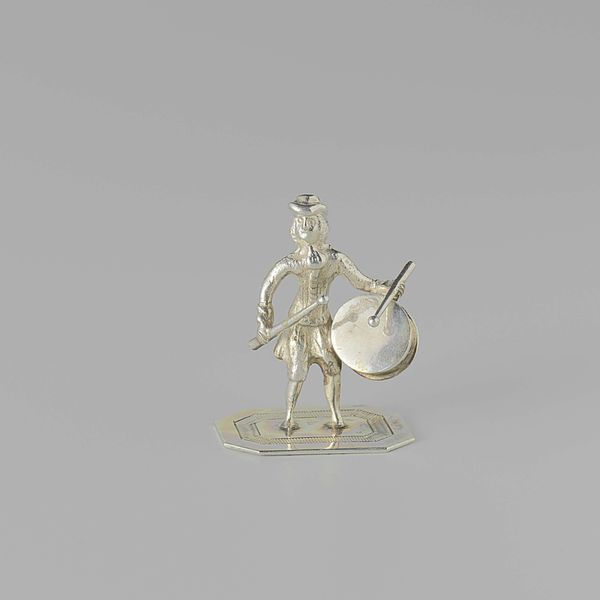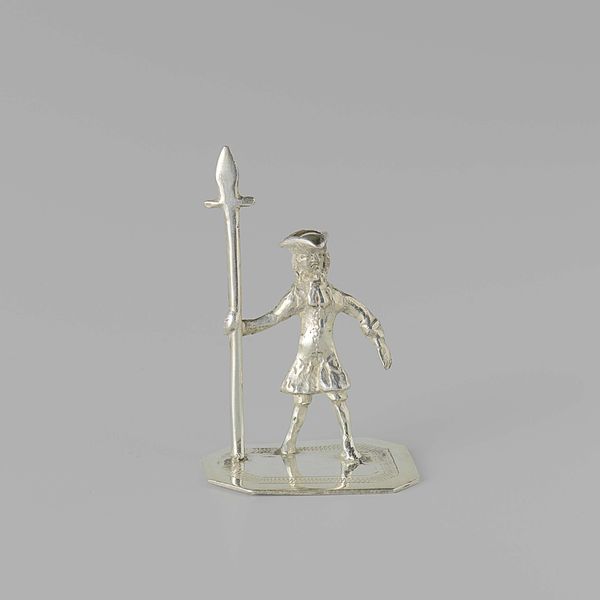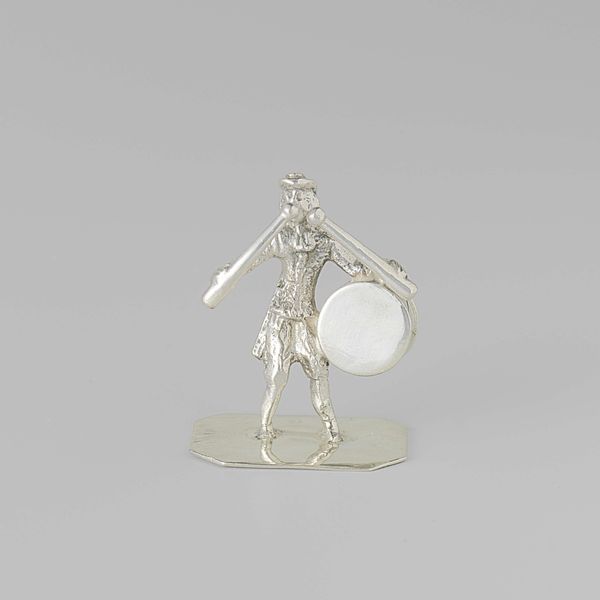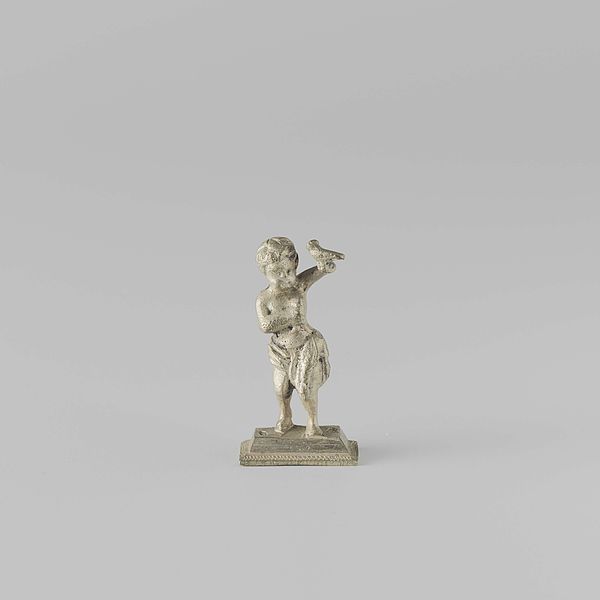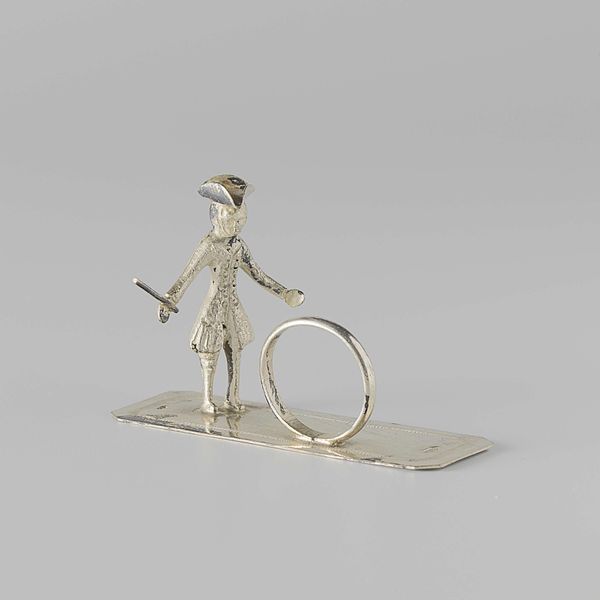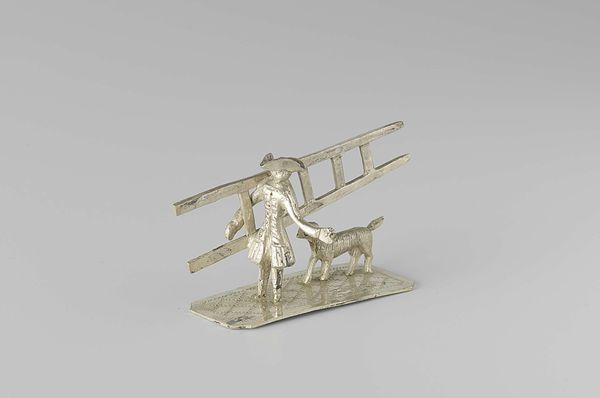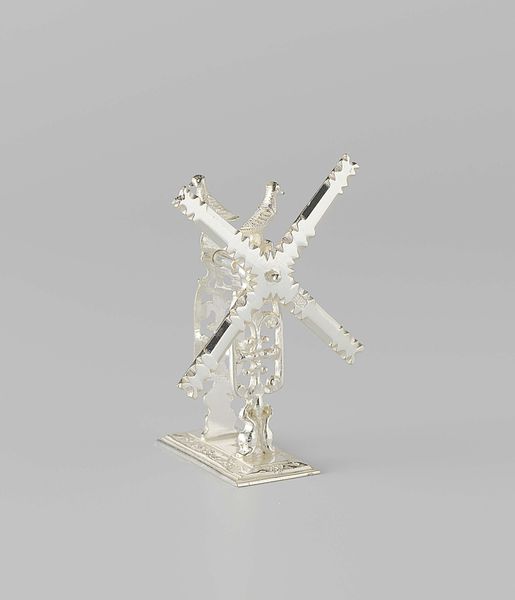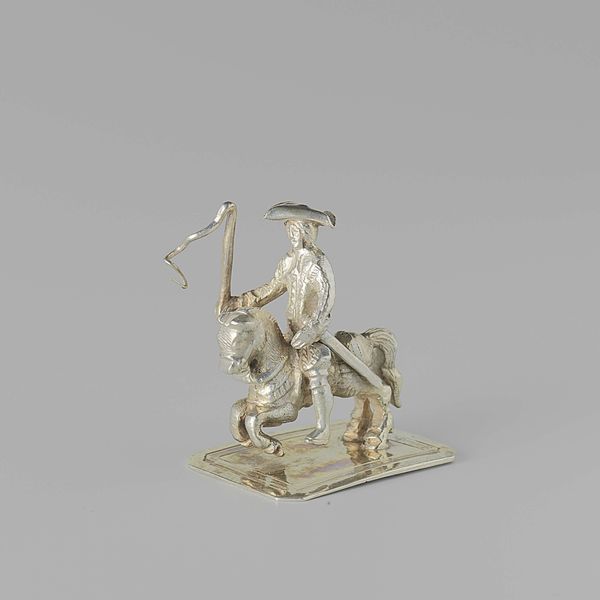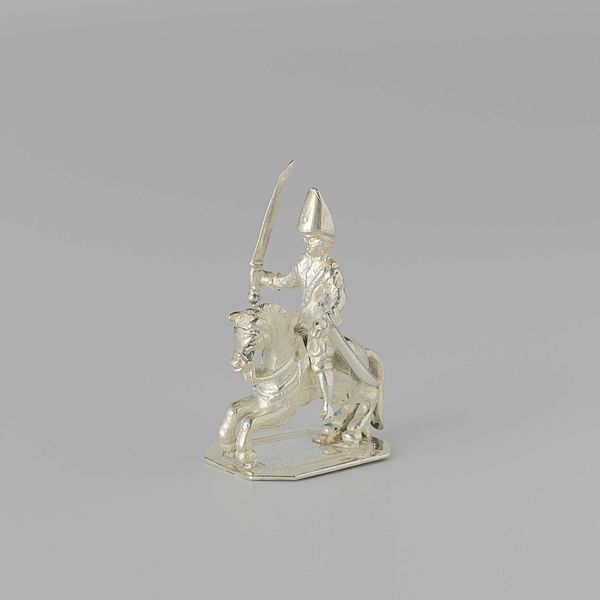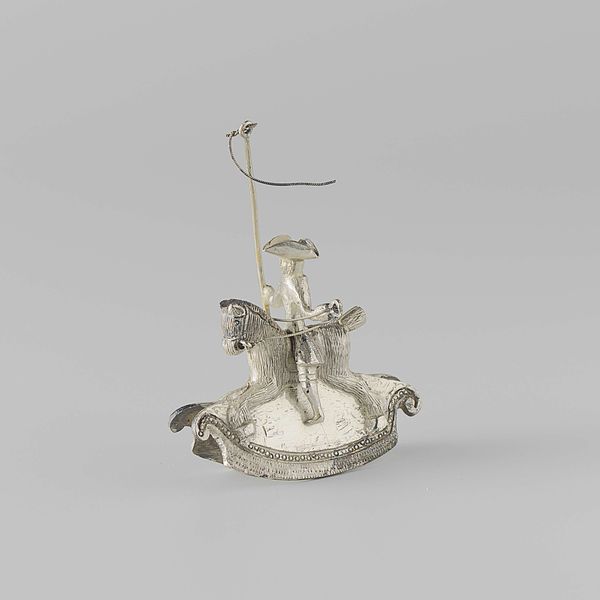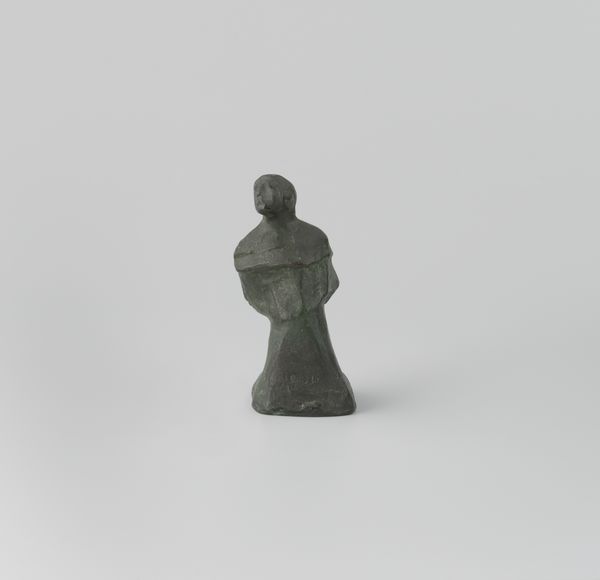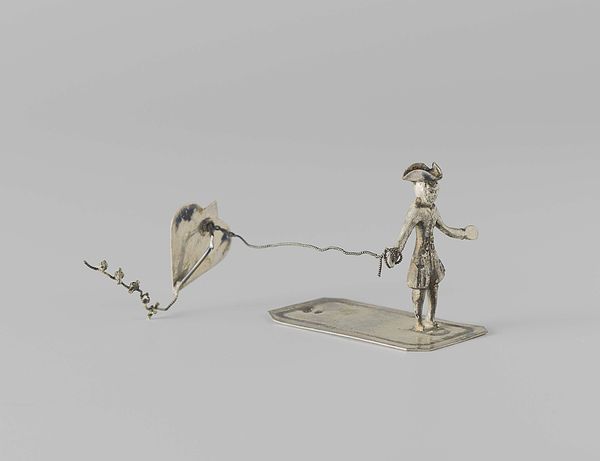
metal, sculpture
#
metal
#
figuration
#
sculpture
#
miniature
Dimensions: height 4.7 cm, width 2.7 cm, depth 2.3 cm, weight 12.57 gr
Copyright: Rijks Museum: Open Domain
Curator: Here we have "Nachtwacht," a miniature sculpture by Arnoldus van Geffen, created around 1769. It's fashioned from metal. What strikes you initially about it? Editor: Its austere simplicity. The figure almost appears suspended, like a ghostly projection rather than a solid form. Given the name, it evokes feelings of watchfulness, or even oppression. Curator: It is compelling how Van Geffen captures a sense of watchfulness using such limited detail. What social context do you think this was created? Editor: Considering it's a miniature representing what I assume is a guardsman, it invites us to ponder the socio-political structure of the period. How was power represented through figures like this, and what narratives about security or dominance were circulated through this kind of figuration? Curator: Precisely. Think of the narratives such an object might support. The late 18th century was filled with political shifts, I can see an increased focus on personal representation as a signifier of the social standing in miniature artworks such as this one. This guardsman stands as a signifier, or reminder of hierarchy and class, and the gendered ideas tied up in that, right? Editor: Exactly. Moreover, its small size points to personal possession, and perhaps even the quiet authority wielded by an owner with political affiliations. It would be fascinating to see if there are records documenting who possessed it and for what purposes. Did they feel secure? Or threatened by a changing order? Curator: Right! We can consider that. Furthermore, metalwork in the period represented both value and labor—who made it, and for what clientele? Did Van Geffen's identity or background give him unique insights to this piece? The choice of material and scale prompts us to question power dynamics, personal narrative, the politics embedded in representations of vigilance during the Enlightenment and pre-Revolutionary periods. Editor: Ultimately, I leave with a lingering sense of unanswered questions about individual agency, public display, and class structures during a volatile historical moment. Curator: Me too! Thanks for highlighting these fascinating connections and adding dimension to our understanding of such seemingly diminutive yet thought-provoking artifact!
Comments
No comments
Be the first to comment and join the conversation on the ultimate creative platform.

